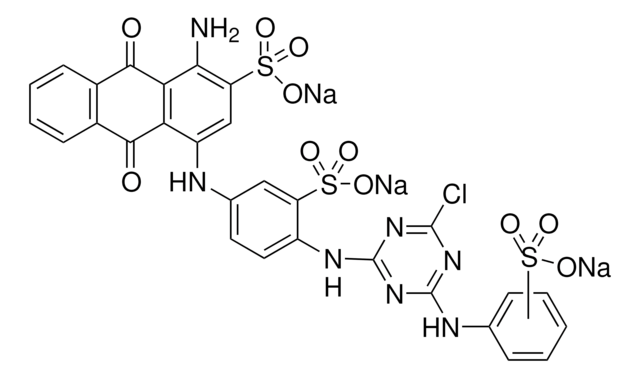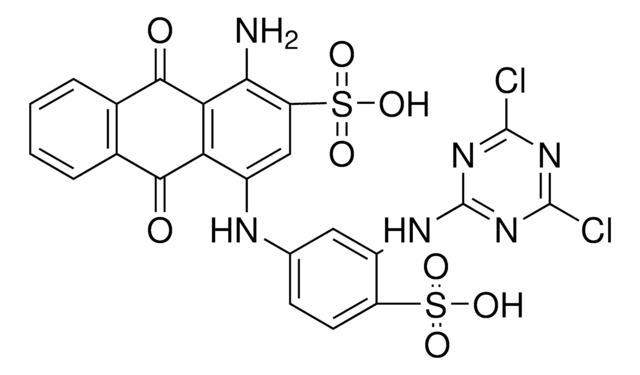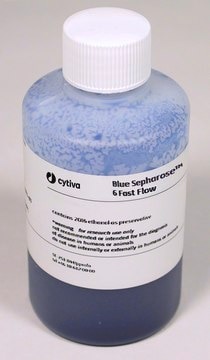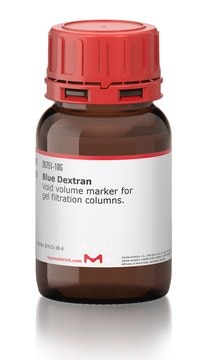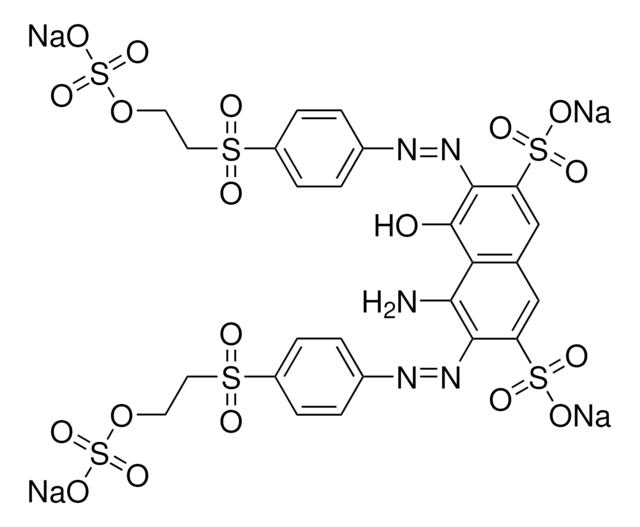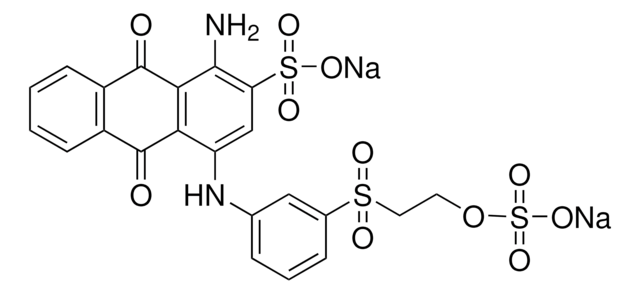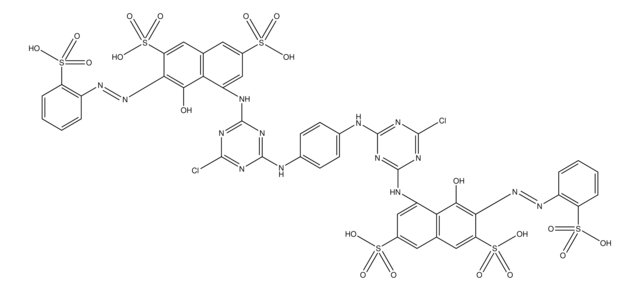B1064
Cibacron Blue 3G-A
Dye content ≥55 %, Powder
Synonym(s):
Cibacron Blue; 1-amino-4-[4-[[4-chloro-6-(2-sulfoanilino)-1,3,5-triazin-2-yl]amino]-3-sulfoanilino]-9,10-dioxoanthracene-2-sulfonic acid
About This Item
Recommended Products
product name
Cibacron Blue 3G-A, Dye content ≥55 %
form
powder
Quality Level
composition
Dye content, ≥55%
color
dark blue
solubility
H2O: 10 mg/mL, blue
application(s)
diagnostic assay manufacturing
hematology
histology
storage temp.
room temp
SMILES string
Nc1c(cc(Nc2ccc(Nc3nc(Cl)nc(Nc4ccccc4S(O)(=O)=O)n3)c(c2)S(O)(=O)=O)c5C(=O)c6ccccc6C(=O)c15)S(O)(=O)=O
InChI
1S/C29H20ClN7O11S3/c30-27-35-28(33-16-7-3-4-8-19(16)49(40,41)42)37-29(36-27)34-17-10-9-13(11-20(17)50(43,44)45)32-18-12-21(51(46,47)48)24(31)23-22(18)25(38)14-5-1-2-6-15(14)26(23)39/h1-12,32H,31H2,(H,40,41,42)(H,43,44,45)(H,46,47,48)(H2,33,34,35,36,37)
InChI key
YKCWQPZFAFZLBI-UHFFFAOYSA-N
Looking for similar products? Visit Product Comparison Guide
Related Categories
Application
Biochem/physiol Actions
wgk_germany
WGK 3
flash_point_f
Not applicable
flash_point_c
Not applicable
Certificates of Analysis (COA)
Search for Certificates of Analysis (COA) by entering the products Lot/Batch Number. Lot and Batch Numbers can be found on a product’s label following the words ‘Lot’ or ‘Batch’.
Already Own This Product?
Find documentation for the products that you have recently purchased in the Document Library.
Our team of scientists has experience in all areas of research including Life Science, Material Science, Chemical Synthesis, Chromatography, Analytical and many others.
Contact Technical Service